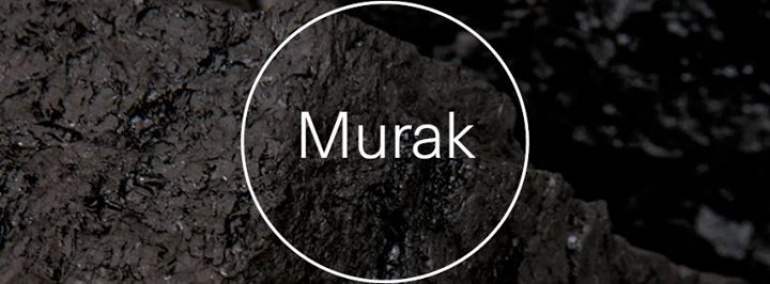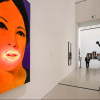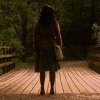
Teresa Kazimiera Murak-Rembielińska | otwarcie wystawy / opening of the exhibition
[English follows]
daty trwania wystawy: 07.05 – 17.07.2016
kuratorka: Joanna Kordjak
współpraca: Katarzyna Kołodziej
Kluczowa postać polskiej sceny artystycznej już od momentu debiutu w pierwszej połowie lat 70. Teresa Murak — performerka i rzeźbiarka podejmująca działania w przestrzeni publicznej, prekursorka i najważniejsza przedstawicielka sztuki ziemi w Polsce.
Od pierwszych realizacji — takich jak "Zasiew" w domu studenckim Dziekanka (1972), "Procesja" (1974) czy "Przyjście zieleni" w Galerii Repassage (1975) — znakiem rozpoznawczym artystki jest wykorzystywanie biologicznych procesów: zasiewu, wzrostu, obumierania.
Na wystawie w Zachęcie twórczość Teresy Murak prezentowana jest zarówno poprzez wybrane prace powstałe w ciągu ostatnich kilku dekad, jak i najnowsze realizacje (w różny sposób odwołujące się do tych historycznych). Szczególnie ważne miejsce zajmują dzieła, których tworzywo stanowi ziemia w rozmaitych postaciach, a także działania artystki z krajobrazem — zarówno w mikro, jak i w makroskali: od wydeptywania ścieżek w pejzażu po rzeźby dla ziemi, których parametry wyznacza ciało ludzkie.
Materią sztuki Teresy Murak jest czas i entropia, które określiły sposób pracy nad wystawą oraz funkcjonowanie w jej przestrzeni poszczególnych dzieł. W proces tworzenia Murak wpisane jest nieustanne wędrowanie. Artystka daje się zatrzymać przez miejsca, w których potem realizuje swoje prace. Dostrzega i sięga po to, co przyziemne, niskie, pospolite — czynności lub przedmioty podnoszone do rangi sacrum.
Istotnym elementem wędrowania jest otwarcie na współuczestnictwo — spotkania, budowanie relacji, wreszcie radość tworzenia we wspólnocie.
Wynikiem wieloletniego budowania relacji jest jedna z prac realizowanych na wystawę w Zachęcie "ZOBACZENIE UNIESIENIE"*. Jest ona symbolicznym powrotem do miejsca, w którym 30 lat temu artystka zrealizowała "Performans. Lato 15 lipca – 15 sierpnia 1987. Lillehammer". Materią, jaką posłużyła się wówczas, był rozczyn chlebowy oraz ziemia z bagnistych terenów norweskiego lasu.
Obecnie tworzona praca to kontynuacja wędrówki artystki wzdłuż osi północ-południe zapoczątkowanej w 1973 roku (gdy po raz pierwszy przyjechała do Norwegii). Zorganizowane z jej inicjatywy w 1987 sympozjum "Natura-Sztuka" w Lillehammer (której współrealizatorem był Erik Fonkalsrud, również zaangażowany w aktualny projekt), pozwoliło na nawiązanie kontaktów między polskim i norweskim środowiskiem artystycznym.
-------------------------------------------------------------------------------------
dates of the exhibition: 07.05 – 17.07.2016
curator: Joanno Kordjak
cooperation: Katarzyna Kołodziej
A key figure on the Polish artistic scene from the moment of her debut in the first half of the 1970s. Teresa Murak, a performer and sculptor engaging in activities in public space, is a precursor and one of the most important representatives of earth art in Poland.
From her first projects – such as "Sowing" (1972) in the Dziekanka student house, "Procession" (1974) or "The Coming of Greenery" in the Repassage Gallery (1975) – the artist’s trademark has been the use of biological processes: of sowing, growth, and decay.
At the exhibition in Zachęta, Teresa Murak’s oeuvre is presented both through a selection of the works she has made over the course of her several decades of artistic activity and through her newest works (often harking back in a variety of ways to earlier ones). An especially important place is occupied by works whose material is earth in its various forms, and also by the artist’s interventions into the landscape on both micro- and macro-scales: from the treading out of paths in the landscape to earth sculptures whose dimensions are formed by the human body.
The materials of Teresa Murak’s art are time and entropy, and it is these which have had a deciding role in her mode of work on the exhibition and the functioning of particular works within it. In the process of Murak’s work is also inscribed an unceasing journey. The artist allows herself to be held by the places in which she then realizes her works. She takes note and makes use of that which is pleasurable, low, everyday – actions and objects which are then raised to the level of the sacred.
A significant aspect of her journeys is an openness to participation – to meetings, to the building of relations and finally to the joy of communal creation.
An outcome of her long-term building of relations is one of the works realised for the exhibition in Zachęta "SEEING LIFTING". This is a symbolic return to the place in which 30 years ago the artist realized "Performance. Summer 15th June – 15th August 1987. Lillehammer". The material that she then used was sourdough and earth from the boggy terrain of a Norwegian forest.
The work currently made is a continuation of the artist’s journey along the north-south axis begun in 1973 (when she came to Norway for the first time). "The Nature-Art" symposium organized on her initiative in 1987 (that she co-organised with Erik Fonkalsrud, who is also engaged in the current project), enabled her to foster contacts between Polish and Norwegian artistic circles.






